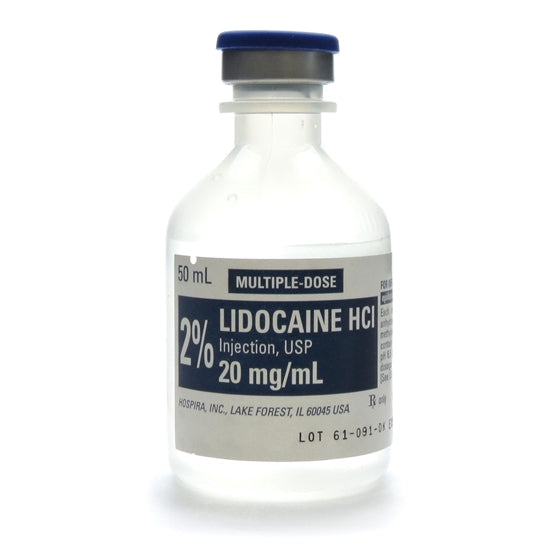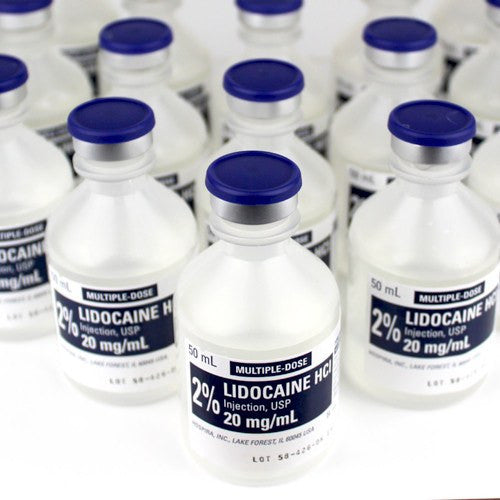Lidocaine 2% for Injection 50 mL Multi-Dose 25/Tray by Pfizer (Rx)
(Note: We don’t Fill Personal Prescriptions)
How to Order:
You will receive instructions on how to create an account along with Rx Ordering Details.
Lidocaine 2% for Injection 50 mL Multi-Dose is used as a local anesthetic to provide temporary numbness and pain relief during medical and surgical procedures. It works by blocking nerve signals in specific areas, facilitating various interventions such as suturing, biopsies, or minor surgeries. This formulation is ideal for multiple uses within a clinical setting due to its multi-dose vial, allowing for efficient and repeated application. It ensures effective pain management and patient comfort across a range of procedures.
Lidocaine 2% for Injection is a sterile, non-pyrogenic local anesthetic solution formulated to provide local or regional anesthesia. It contains 2% lidocaine hydrochloride (20 mg/mL) and is primarily used in procedures requiring numbing of a specific area. This product is available in 50 mL multi-dose vials and is packaged by Pfizer Injectables in trays containing 25 vials.
Details and Features:
Volume: 50 mL per vial
Packaging: 25 vials per tray
Concentration: 2% Lidocaine Hydrochloride (20 mg/mL)
Multi-Dose Vial: Allows for multiple withdrawals as needed for various procedures, permitting flexibility and efficiency in medical settings.
Use: Indicated for local infiltration, nerve block, and regional anesthesia.
Mechanism of Action:
Lidocaine functions by blocking sodium channels in neuronal cell membranes. This blockade inhibits the rapid influx of sodium necessary for action potentials in nerves, thereby preventing nerve impulse conduction. The end result is a loss of sensation in the area where lidocaine is injected, providing effective local or regional anesthesia.
Warnings:
-
Professional Administration: Lidocaine 2% should only be administered by healthcare providers experienced in local anesthesia and capable of managing potential complications.
-
Allergic Reactions: Contraindicated in individuals with known hypersensitivity to lidocaine or other amide-type local anesthetics.
-
Toxicity Risk: Overdosage or unintentional intravascular injection can lead to systemic toxicity. Symptoms can include CNS effects like seizures and cardiovascular disturbances.
- Dosage Monitoring: Care must be taken to avoid excessive dosing, particularly in small children, elderly patients, or those with liver dysfunction, due to reduced metabolism resulting in increased levels of lidocaine.
Intravascular Injection Avoidance: Ensure proper needle or catheter placement to prevent inadvertent intravascular delivery.
Side Effects:
- Possible side effects from Lidocaine 2% Injection may include:
Local Reactions: Pain or irritation at the application site, tenderness, or swelling.
-
Central Nervous System Effects: Dizziness, lightheadedness, confusion, or more severe neurological symptoms like twitching or seizures at elevated plasma concentrations.
-
Cardiovascular Effects: Bradycardia, hypotension, or arrhythmias, especially when administered in large volumes or high concentrations.
- Allergic Reactions: Although rare, can occur, leading to symptoms ranging from rash and itching to anaphylactic reactions.
Lidocaine 2% Injection should consistently be used following healthcare guidelines, ensuring that dosage and administration are suited to the individual's condition to effectively manage potential adverse reactions. Practitioners must monitor the patient throughout the use of local anesthetics to safeguard against such effects.




